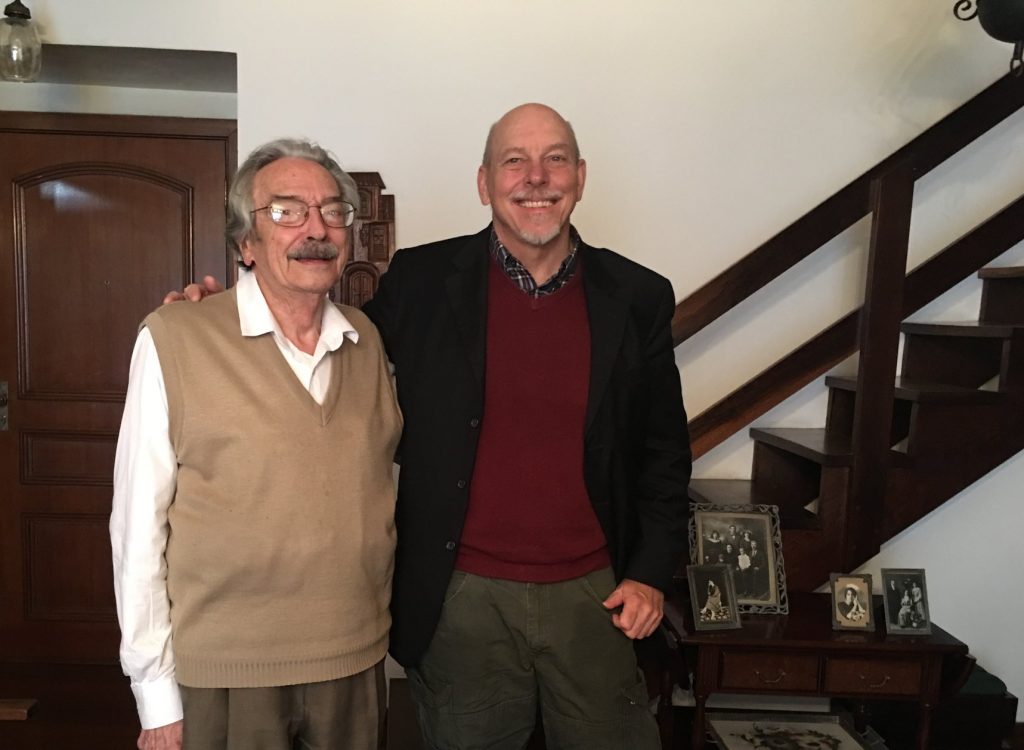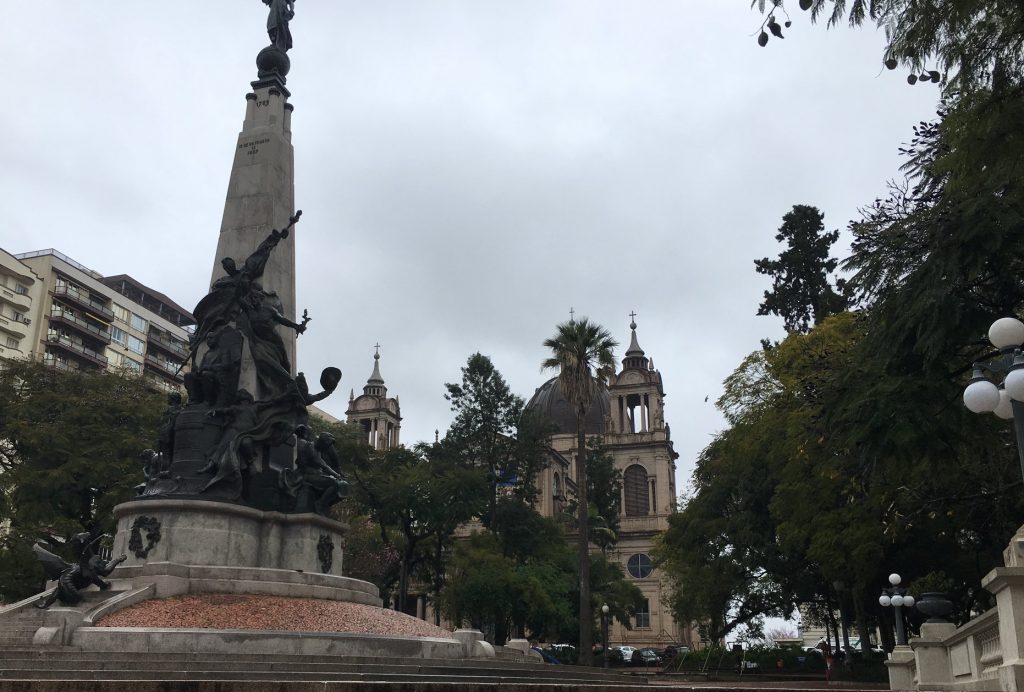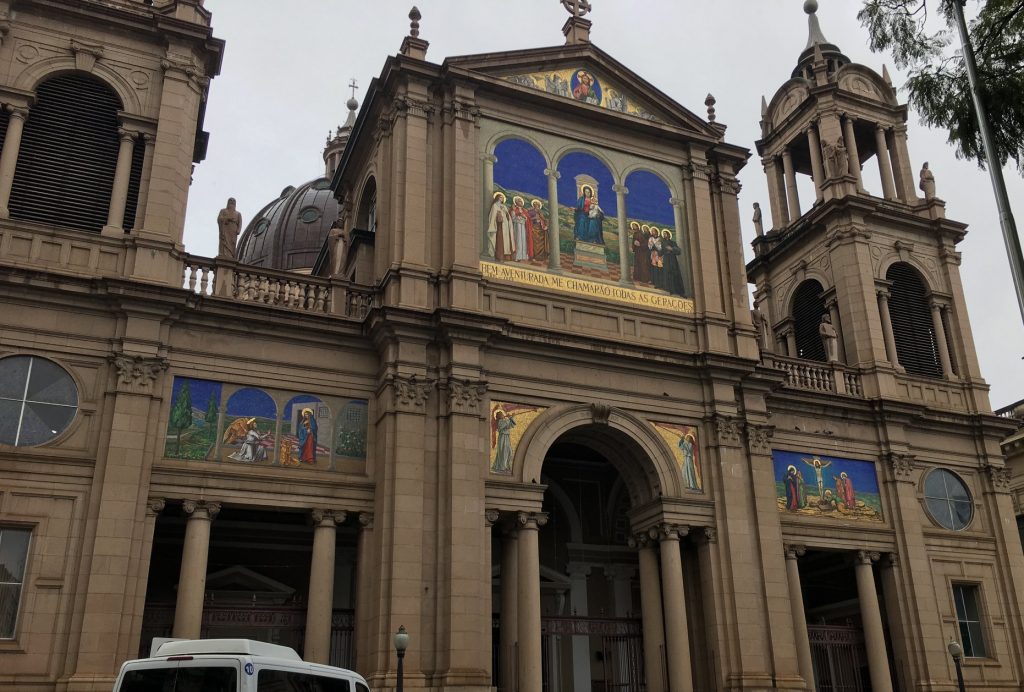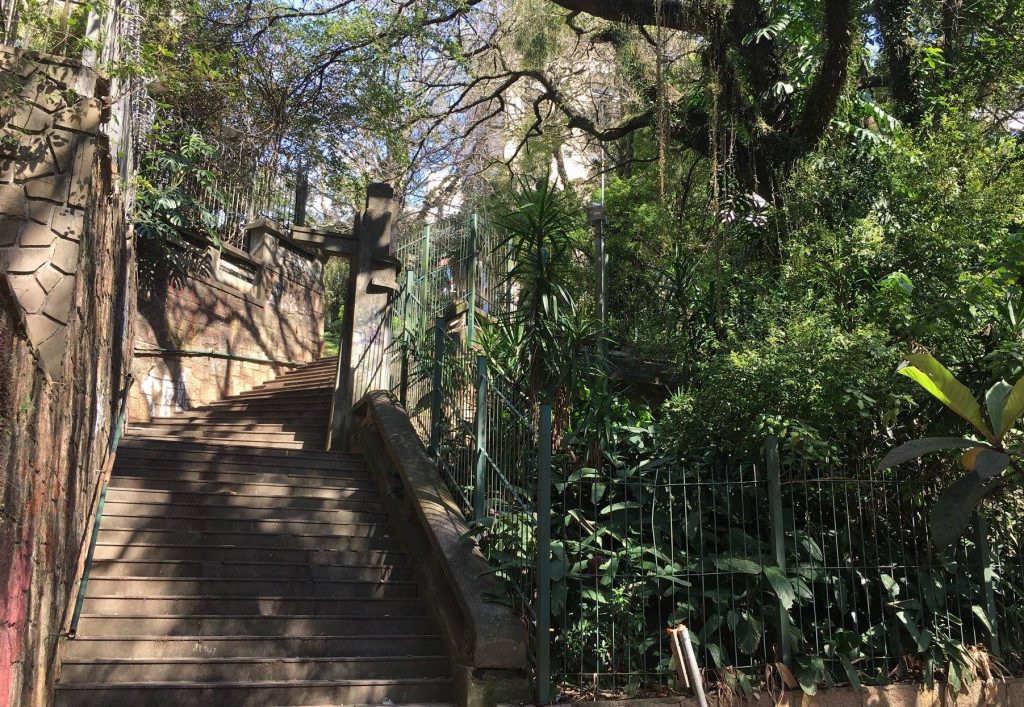Paulo Agustoni had been working for the USG for more forty years by the time I started in the FS and he was waiting from me when I took up my post in Porto Alegre. All counted, Paulo would spend more than fifty (50) years in the service of the United States of America. He showed me his service pins from ten, twenty, thirty and forty years of service. They evidently do not have one for fifty. It so rarely comes up.
I went to visit Paulo during my visit to Porto Alegre. He is now ninety-one years old. People often say that old people still “sharp.” In Paulo’s case, they are telling the truth.
Paulo has a big book of pictures, letter and personnel actions. I was happy that I wrote his EER competently back in 1987, because he still has it.
He was a typical Gaucho when he was born in Passo Fundo, RS back ninety-one years ago, i.e. he was the son of immigrants. His father came from nearby Uruguay. His mother came from farther away in Naples.
Paulo’s daughter pointed out that her grandmother immigrated directly to Porto Alegre. I learned that this was unusual for the time. Most Italian immigrants headed for “the colony,” which was the land of the Italians in the RGS mountains where they came to predominate in cities like Caixias do Sul or Bento Gonçalves, and in the countryside around where they established vineyards and small farms. There is town called Antonio Prato much loved by Romance language linguists, since that is where they go to study Italian dialects no longer extant in the old country.
This area of Rio Grande do Sul and neighboring state of Santa Catarina is one of the most pleasant landscapes on earth. The climate is moderate, since it has higher altitudes and lower latitudes. It gets enough rain to keep it green all year around and immigrants from Italy and Germany constructed neat communities among the majestic araucaria trees (sometimes called Parana pine).
In 1944, Paulo started to work for the USG at the predecessor of the USIA. His job was to show films in the interior of the state. From there he worked his way up and made a good life for himself and his family.
Paulo helped me when I was a green young officer and it was great to see him again.
My first picture shows Paulo and me. Next three are from the Cathedral Square in POA. Picture # 4 shows Theatro Sao Pedro. Back when I first came to POA, it was a ruin. Some people wanted to tear it down and build one of those steel and concrete monstrosities that passed for modern architecture – like the the thing you see at the edge of the picture. It was saved largely though the efforts of Eva Sopher. Her family fled Hitler and found refuge in RGS. She paid pack the kindness by saving this landmark. I met her a couple times. Remarkable woman, the kind of person who is the epitome of culture and kindness. Her work lives on.





